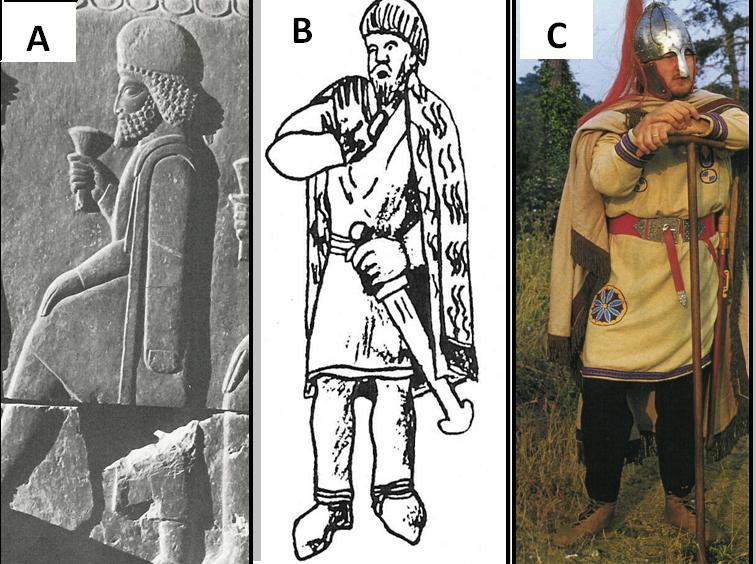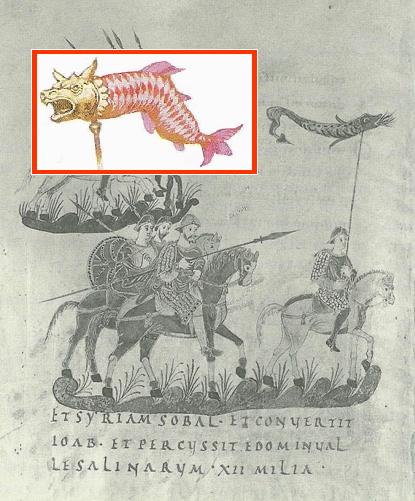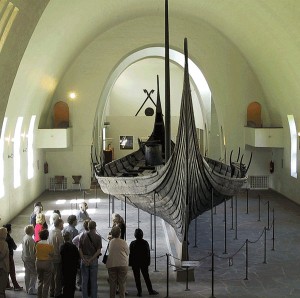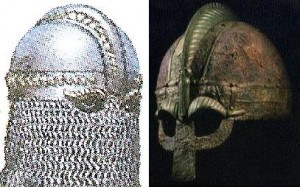The Persian Heritage has published the following article by Kaveh Farrokh which can be downloaded in full, from Academia.edu:
Farrokh, K. (2018). Germania, Vikings, Saxons and Ancient Iran. Persian Heritage, 90, pp.28-30.
Below is a select excerpts from the above article:
“Professor Christopher I. Beckwith (Professor of Central Eurasian Studies at Indiana University): “The first-century AD Germania by the Roman historian Tacitus gives the earliest detailed description of the Germanic peoples…The account of Tacitus and other early records reveal very clearly that the early Germanic peoples, including the ancestors of the Franks, belonged to the Central Eurasian Culture complex which they had maintained since Proto-Indo-European times, just as the Alans and other Central Asian Iranians had done. This signifies in turn that ancient Germania was culturally a part of Central Eurasia and had been so ever since the Germanic migration there more than a millennium earlier” (Empires of the Silk Route, Princeton University Press, 2009, pages 80-81).”

The Iranian Kandys cape and its legacy in Europe (click to enlarge). (A) Medo-Persian nobleman from Persepolis wearing the Iranian Kandys cape of the nobility 2500 years past (B) figure of Paul dressed in North Iranian/Germanic dress from a 5th century ivory plaque depicting the life of Saint-Paul (C) reconstruction by Daniel Peterson (The Roman Legions, published by Windrow & Greene in 1992, p.84) of a 4th-5th century Germanic warrior wearing Iranian style dress and the Kandys. The Iranian Persepolis styles of arts and architecture continued to exert a profound influence far beyond its borders for centuries after its destruction by Alexander (Pictures used in Kaveh Farrokh’s lectures at the University of British Columbia’s Continuing Studies Division and Stanford University’s WAIS 2006 Critical World Problems Conference Presentations on July 30-31, 2006).
As noted further in the article (geopolitically rationalized) terms such as “Middle East”, “Islamic Civilization”, etc. have served to distort historical connections between not just Germanic and Iranian peoples but the broader links between Europa and Iranian peoples across the millennia (download the 2017 article Farrokh and Vasseqhi in the Persian Heritage journal). As noted Dr Sheda Vasseghi a document written by a well-informed CIA official (whose name has now been redacted from the original document):
“… the CIA tends to be “alert and responsive to official changes in the names of individual political entities.” However, when it comes to geographic terms, the CIA adheres “to usages that are imprecise, egocentric, and anachronistic“. … According to the CIA Memo, terms such as “the Middle East” are, and always were, imprecise and egocentric given they reflect “the world as viewed from London and western Europe.” The
[CIA] author is alarmed at how widespread the usage of these imprecise terms among the intellectual circles were, including as part of titles for respected publications such as The Middle East Journal.”To read more of the above article click here … As noted by Dr. Vasseghi in the abstract of her 2017 Dissertation (for more click here…):
“Western Civilization history marginalizes, misrepresents, misappropriates, and/or omits Iran’s positioning. Further, the mainstream approach to teaching Western Civilization history includes the Judeo-Christian-Greco-Roman narrative.”
A depiction of Geoffrey of Monmouth’s Historia Regum Britanniae and Sir Thomas Mallory’s Le Morte d”Arthur. Note the windsock carried by the horseman (Farrokh, Shadows in the Desert: Ancient Persia at War, 2007, pp.171) – this item was bought from the wider Iranian realm (Persia, Sarmatians, etc) into Europe by the Iranian-speaking Alans. The inset depicts a reconstruction of a 3rd century CE Partho-Sassanian banner by Peter Wilcox (1986).
As noted further in the Persian Heritage journal (links also inserted in below paragraph for further reference):
“The links between Europa and the ancient Iranians have been extensive in history. It was during the Partho-Sassanian era where Europe experienced direct interactions with Iran, a process in place since the Achaemenids (see for example Farrokh, K. An Overview of the Artistic, Architectural, Engineering and Culinary exchanges between Ancient Iran and the Greco-Roman World. AGON: Rivista Internazionale di Studi Culturali, Linguistici e Letterari, No.7, pp.64-124, 2016) [Download in full from Academia.edu]. It was also during the reign of the Parthian and Sassanian dynasties in Persia when several waves of Iranian speakers migrated into Europe. These are known variously in history as Sarmatians, Alans, Roxolani, Yas, etc. Put simply, the influence of ancient Iranian civilization came through two general channels: the Partho-Sassanian empires and fellow Iranian peoples who lived in Eurasia and Eastern Europe at the time. Many of these tribes were to successfully migrate into Central, Northern and Western Europe.”
The Oseberg longship at the Viking Ship Museum in Oslo (Picture source: Heritage Trust). Viking ships like these sailed to northern Persia in search of trade.
Another quote from the article is as follows (links also inserted in below paragraph for further reference):
“Contacts between the Germanic peoples and the Iranian world were especially among the North Germanic Nordic peoples and their Viking successors in the post-Islamic era of Persia. The famous Viking Ulfbehrt sword has in fact a Persian connection. Fredrik Charpentier Ljungqvist of Stockholm University has researched the Volga trade route of the Vikings and their ships between Lake Malaren in Sweden to the ports of Northern Iran between the early 800s to mid-1000s where: “…it is very likely that the steel that you find in the Ulfberht swords originated from Iran…I would guess that they bought it [Persian steel] from friendly trading connections in Iran paid with furs and other Nordic commodities and took it back on the small ships that they used on the rivers” [see full article here …]. While Sassanian Persia had fallen to the Arabo-Muslim invasions of the 7th century CE, Northern Persia remained defiant with its metallurgical technology continued persisting after the fall of the Sassanians, a factor that benefited Viking traders who sailed with ships to Northern Iran along the Volga trade route. The Vikings however, were already well already in contact with Iran during the Sassanian era.”
Viking Helmet (Right; Picture Source: English Monarchs) and reconstruction of earlier Sassanian helmet at Taghe Bostan, Kermanshah, Iran (Left; Picture Source: Close up of Angus Mcbride painting of Sassanian knight at Taghe Bostan, Wilcox, P. (1999). Rome’s Enemies: Parthians and Sasanid Persians. Osprey Publishing, p.47, Plate H1).






